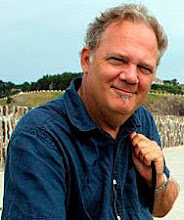Sure, it kills birds, but it won't kill you
Wendy Orent is the author of "Plague: The Mysterious Past and Terrifying Future of the World's Most Dangerous Disease."
"It must seem like the sky is falling — that it's about to rain chaos and death as the dreaded H5N1 avian flu appears to close in.
Last spring, bird flu broke out in Cambodia, Thailand and Vietnam. It spread to western China, Siberia, Kazakhstan and Mongolia in the summer. How did it travel half a continent? This means, say breathless news reports, that what happened in 1918 could happen again, this time with H5N1. But Peter Palese doesn't think so.
He is lab director at Mount Sinai Hospital in New York, where the technique that re-created the 1918 genes — known as reverse genetic engineering — was developed. He and associate Adolfo Garcia-Sastre contend that what the resurrected virus really shows is how supremely adapted it is — how well its parts fit together, how perfectly it works. The sublime malignance of the 1918 virus doesn't lie in one part but rather in how the genes function together. Evolution shaped this virus to be a sleek, effective killing machine.
We don't know what bird the genes came from originally. It wasn't a domestic duck, chicken or goose, because their flu strains are quite different. According to Jeffery Taubenberger, the senior researcher at the Armed Forces Institute of Pathology, the 1918 flu originated in an unknown bird reservoir, one equally distant from American and Eurasian birds. "To me, it's from an unknown host, evolutionarily isolated from other birds," Taubenberger said last year. But the 1918 pandemic strain was different.
According to evolutionary biologist Paul W. Ewald of the University of Louisville, its lethality evolved in the trenches, the trucks, the trains and the hospitals of World War I. Infected soldiers were packed shoulder to shoulder with the healthy, and even the deadliest virus can jump from one host to another. The Western Front was a disease factory, and it manufactured the 1918 flu. The packed chicken farms of Asia are a close parallel. H5N1 evolved the same way as the 1918 flu did in the trenches."
"It must seem like the sky is falling — that it's about to rain chaos and death as the dreaded H5N1 avian flu appears to close in.
Last spring, bird flu broke out in Cambodia, Thailand and Vietnam. It spread to western China, Siberia, Kazakhstan and Mongolia in the summer. How did it travel half a continent? This means, say breathless news reports, that what happened in 1918 could happen again, this time with H5N1. But Peter Palese doesn't think so.
He is lab director at Mount Sinai Hospital in New York, where the technique that re-created the 1918 genes — known as reverse genetic engineering — was developed. He and associate Adolfo Garcia-Sastre contend that what the resurrected virus really shows is how supremely adapted it is — how well its parts fit together, how perfectly it works. The sublime malignance of the 1918 virus doesn't lie in one part but rather in how the genes function together. Evolution shaped this virus to be a sleek, effective killing machine.
We don't know what bird the genes came from originally. It wasn't a domestic duck, chicken or goose, because their flu strains are quite different. According to Jeffery Taubenberger, the senior researcher at the Armed Forces Institute of Pathology, the 1918 flu originated in an unknown bird reservoir, one equally distant from American and Eurasian birds. "To me, it's from an unknown host, evolutionarily isolated from other birds," Taubenberger said last year. But the 1918 pandemic strain was different.
According to evolutionary biologist Paul W. Ewald of the University of Louisville, its lethality evolved in the trenches, the trucks, the trains and the hospitals of World War I. Infected soldiers were packed shoulder to shoulder with the healthy, and even the deadliest virus can jump from one host to another. The Western Front was a disease factory, and it manufactured the 1918 flu. The packed chicken farms of Asia are a close parallel. H5N1 evolved the same way as the 1918 flu did in the trenches."



0 Comments:
Post a Comment
<< Home